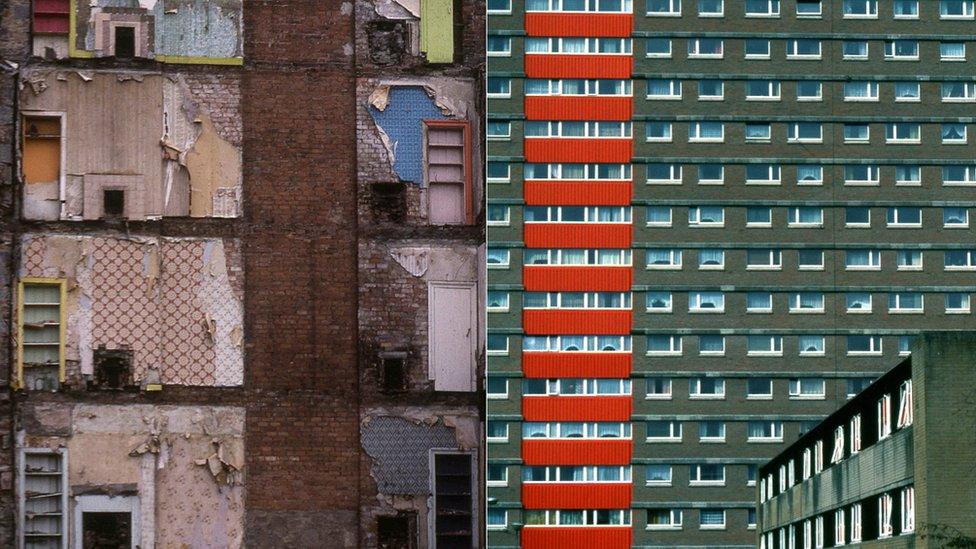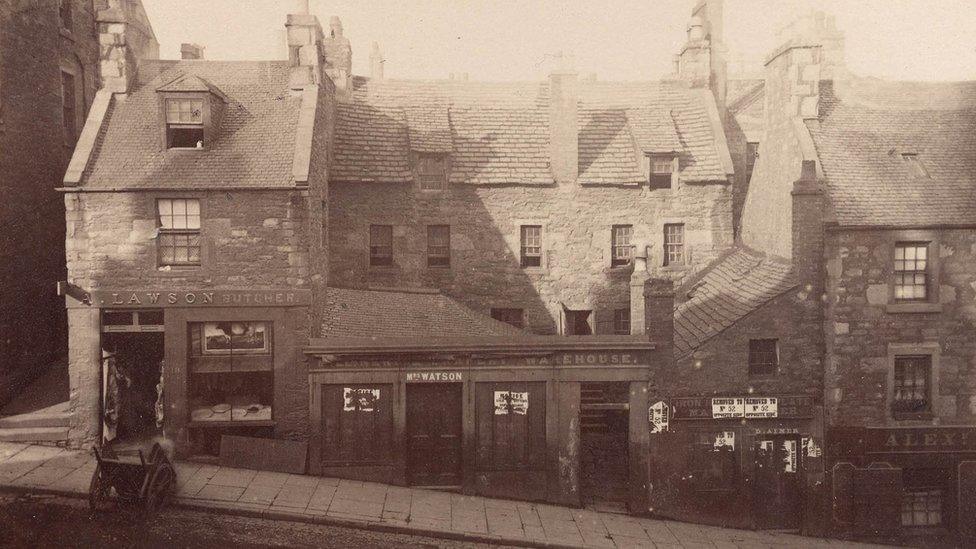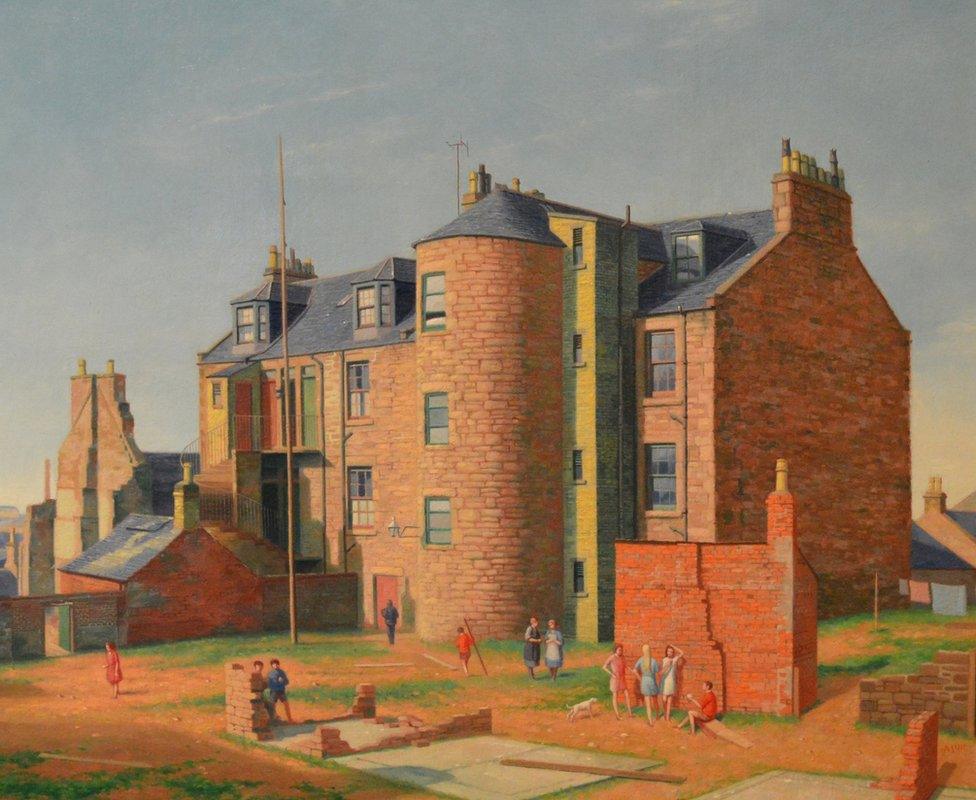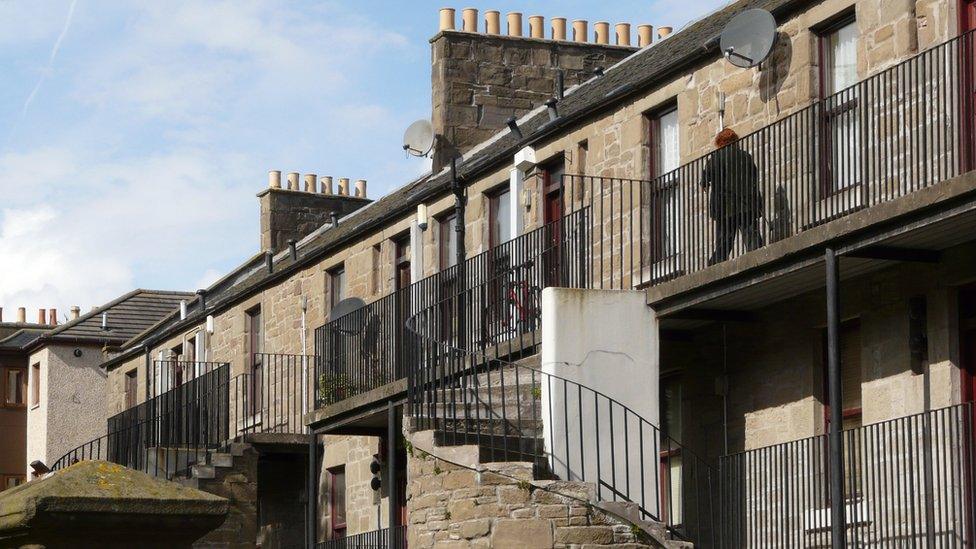New exhibition digs deep into Dundee's housing history
- Published

Many of the older tenements were demolished and replaced with multi-storey blocks
The history of housing in Dundee - from hastily-built tenements for a growing population to post-industrial decay - is the subject of a new exhibition.
Dundee University's Living Together focuses on communal and social housing from the 19th Century onwards.
It begins with the rapid industrialisation of the city where new tenement blocks left many living in appalling conditions.
Many older tenements were torn down as they were unfit for habitation.

The exhibition features photographs, artwork and architect's designs of Dundee housing
The exhibition features photographs, artwork, and architects' designs.
In 1917, City Architect James Thomson produced a comprehensive report on the post-war housing needs of Dundee.
Thomson came up with a plan for a series of new housing estates ahead of any other initiative in Scotland at the time.
In the 1960s Dundee looked to the multi-storey tower block to solve its housing needs with blocks built in areas including Ardler and the Hilltown.

Many of the city's tenements were located in the Hilltown

Some "pletties" or platform landings are still visible today
Many former textile mills were turned into flats in the 1980s, with large-scale private developments built on former farmland on the outskirts of the city in recent years.
Dundee University museum curator Matthew Jarron said there was a variety of media on display.
He said: "This has allowed us to give a unique overview of some of the most distinctive forms of housing in Dundee - from Victorian tenements with their "pletties" (landings) to pioneering council houses, post-war multis, student halls of residence, and more."
The exhibition runs at the university's Lamb Gallery until 25 January.